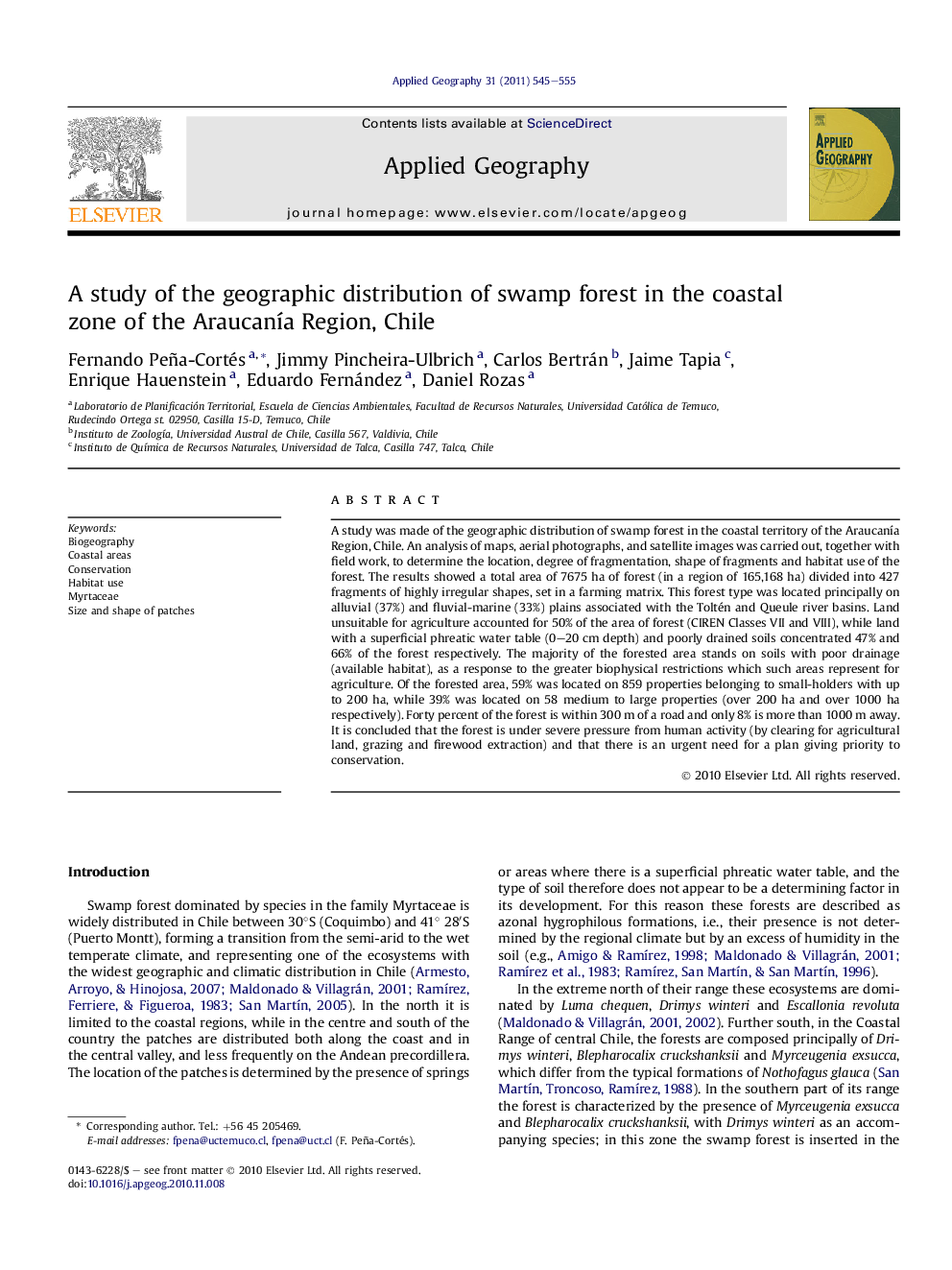| کد مقاله | کد نشریه | سال انتشار | مقاله انگلیسی | نسخه تمام متن |
|---|---|---|---|---|
| 83765 | 158738 | 2011 | 11 صفحه PDF | دانلود رایگان |

A study was made of the geographic distribution of swamp forest in the coastal territory of the Araucanía Region, Chile. An analysis of maps, aerial photographs, and satellite images was carried out, together with field work, to determine the location, degree of fragmentation, shape of fragments and habitat use of the forest. The results showed a total area of 7675 ha of forest (in a region of 165,168 ha) divided into 427 fragments of highly irregular shapes, set in a farming matrix. This forest type was located principally on alluvial (37%) and fluvial-marine (33%) plains associated with the Toltén and Queule river basins. Land unsuitable for agriculture accounted for 50% of the area of forest (CIREN Classes VII and VIII), while land with a superficial phreatic water table (0–20 cm depth) and poorly drained soils concentrated 47% and 66% of the forest respectively. The majority of the forested area stands on soils with poor drainage (available habitat), as a response to the greater biophysical restrictions which such areas represent for agriculture. Of the forested area, 59% was located on 859 properties belonging to small-holders with up to 200 ha, while 39% was located on 58 medium to large properties (over 200 ha and over 1000 ha respectively). Forty percent of the forest is within 300 m of a road and only 8% is more than 1000 m away. It is concluded that the forest is under severe pressure from human activity (by clearing for agricultural land, grazing and firewood extraction) and that there is an urgent need for a plan giving priority to conservation.
Research highlights
► The distribution of swamp forest responds to the presence of humid areas.
► These ecosystems do not use the entire available habitat (poorly drained land).
► The swamp forest is subject to a high pressure of use (e.g., drainage and firewood).
► The forest fragments are characterized for the small size and very irregular shape.
► It is urgent to create a plan to prioritise their conservation.
Journal: Applied Geography - Volume 31, Issue 2, April 2011, Pages 545–555